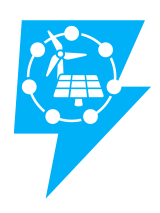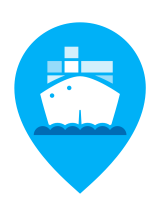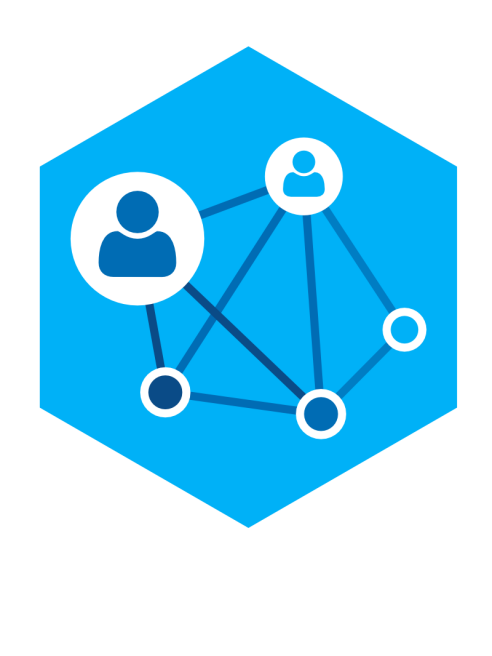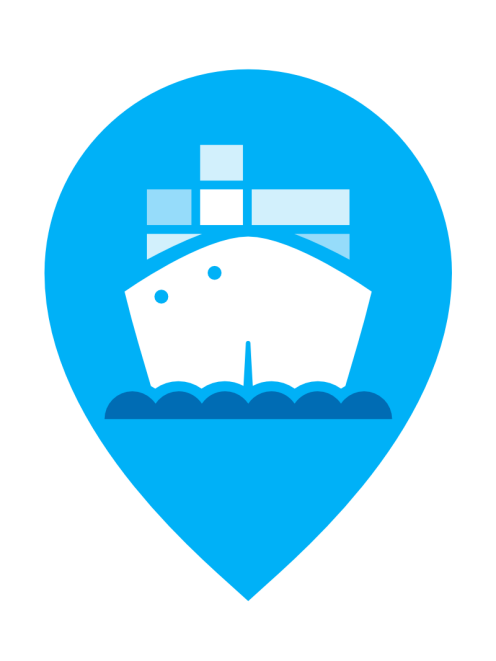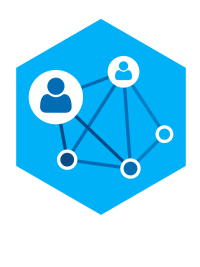Scroll down
Port digitalisation: boosting our sustainable ambitions
ENERGY SYSTEM
SUPPLY CHAINS
PORT CALL
Data Safe House
2
ETA
5
Rail connected
4
Green digi corridor
3
Customs processes
1
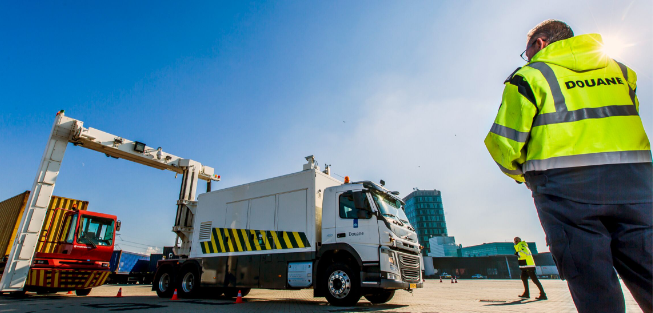
Energy system for the industrial cluster and logistics
Another key topic is optimisation across sites in the industrial cluster. We are working out how to realise load balancing or flexing across sites and not just one chemical plant or refinery. With Yokogawa Electric Corporation, we are researching cross-industry integration for efficient use of energy and utilities in the Rotterdam industrial cluster. First findings indicate cost savings potential as high as 5%. Distro Energy’s automated trading platform allows port companies to trade self-generated energy locally and optimise consumption.
How can we apply digital solutions to ease vast congestion? The Data Safe house plays a prime role: grid operators need insight into the future energy needs of key players in the market. However, not everyone wants to freely share their plans. Data Safe House, a secure online environment linking large companies and grid operators, allows companies to become more sustainable, without revealing sensitive information.
Achieving the energy transition will require a lot of new energy infrastructure. We need an affordable, available energy system to facilitate the energy transition for the industrial cluster in the port and to provide shore power, loading facilities to vessels, barges and logistics operators.
We like to share some examples of projects we have been working on
Efficient, sustainable supply chain to hinterland
Sustainability remains key. Supply chains and service providers need to deliver on that. Drivers include new carbon reporting and pricing schemes and requirements around port performance. Working in ecosystems, especially with start-ups and scale-ups is key to innovation and to bringing together opportunities and market parties. Service providers are starting to play an increasingly important role. Port of Rotterdam can act as an innovation matchmaker to help companies.
In our port area digitalisation of customs processes is facilitating more efficient, safer container checks. Working with Customs, Fresh Produce Centre and Portbase, we have been able to speed up the process of refrigerated container handling. Almost all excesses, such as containers sitting in place for more than five days, have been eliminated from the system. This has played a very significant part in reducing processing time by more than 30%.
The link between sea and hinterland is one of the big challenges for the port of Rotterdam, but also a huge opportunity. Intermodal transport and land-sea connection are high on the agenda, so we’re looking into seamlessly connecting journeys. We have set steps for the road, rail, and barge modalities. The ‘Rail Connected’ programme uses digitisation to streamline information exchange between carriers, rail operators and terminals, thereby reducing manual operations, improving chain alignment in the event of deviations, and improving insights and planning. The Routescanner platform enables cargo owners choose the most sustainable route and modality.
Efficient, safe, sustainable port call
We’ve also been working on optimisation of port calls and just-in-time sailing, with extended windows of notification. A global supply chain ecosystem beyond the boundaries of the Rotterdam port and industrial complex is needed to foster trust and cooperation. By identifying the right data, standards, and digital infrastructure, we’re creating seamless and paperless trade lanes for parties in the supply chain. We have defined our ambition to realise a 100% electronic bill of lading in 2030 together with the Digital Container Shipping Association.
Together with shipping and ports, the Port of Rotterdam Authority is improving the quality and availability of vessel and port call data and introducing shared standards. This will ultimately reduce ship emissions en route, in and around ports, terminals and port cities. Furthermore, this approach will improve safety, compliance, cost, stress levels and job satisfaction, and enable a cleaner environment for shipping lines, shippers, terminals, and ports. By 2030, the Green & Digital Shipping Corridor we’ve developed with the Maritime and Port Authority of Singapore and 20 other partners should reduce international shipping emissions by 20% - 30%.
Connecting the world. Building tomorrow’s sustainable port. With insights driven by technology, data, and digitalisation helping reduce emissions and enable sustainable decision-making. As one of world’s busiest, most important ports, we face unique challenges in achieving sustainability goals while serving a vast, diverse ecosystem. However, we see numerous opportunities to bring sustainable solutions to the port and industrial cluster and jointly achieve carbon neutrality and promote circularity. Utilising smart technology and AI will continue to optimise shipping routes and port operations, reducing unnecessary fuel consumption and emissions. Our goal is to work on all our projects in a seamless, sustainable, and connected way. We’d like to share some examples of projects in which these strongly interconnected themes have been translated into concrete actions.
ENERGY SYSTEM
SUPPLY CHAINS
PORT CALL
Port digitalisation: boosting our sustainable ambitions
Data Safe House
2
Customs processes
1

ETA
5
Rail connected
4
Green digi corridor
3
We like to share some examples of projects we have been working on
Achieving the energy transition will require a lot of new energy infrastructure. We need an affordable, available energy system to facilitate the energy transition for the industrial cluster in the port and to provide shore power, loading facilities to vessels, barges and logistics operators.
Energy system for the industrial cluster and logistics
Sustainability remains key. Supply chains and service providers need to deliver on that. Drivers include new carbon reporting and pricing schemes and requirements around port performance. Working in ecosystems, especially with start-ups and scale-ups is key to innovation and to bringing together opportunities and market parties. Service providers are starting to play an increasingly important role. Port of Rotterdam can act as an innovation matchmaker to help companies.
In our port area digitalisation of customs processes is facilitating more efficient, safer container checks. Working with Customs, Fresh Produce Centre and Portbase, we have been able to speed up the process of refrigerated container handling. Almost all excesses, such as containers sitting in place for more than five days, have been eliminated from the system. This has played a very significant part in reducing processing time by more than 30%.
The link between sea and hinterland is one of the big challenges for the port of Rotterdam, but also a huge opportunity. Intermodal transport and land-sea connection are high on the agenda, so we’re looking into seamlessly connecting journeys. We have set steps for the road, rail, and barge modalities. The ‘Rail Connected’ programme uses digitisation to streamline information exchange between carriers, rail operators and terminals, thereby reducing manual operations, improving chain alignment in the event of deviations, and improving insights and planning. The Routescanner platform enables cargo owners choose the most sustainable route and modality.
Efficient, sustainable supply chain to hinterland
Together with shipping and ports, the Port of Rotterdam Authority is improving the quality and availability of vessel and port call data and introducing shared standards. This will ultimately reduce ship emissions en route, in and around ports, terminals and port cities. Furthermore, this approach will improve safety, compliance, cost, stress levels and job satisfaction, and enable a cleaner environment for shipping lines, shippers, terminals, and ports. By 2030, the Green & Digital Shipping Corridor we’ve developed with the Maritime and Port Authority of Singapore and 20 other partners should reduce international shipping emissions by 20% - 30%.
Efficient, safe, sustainable port call
We’ve also been working on optimisation of port calls and just-in-time sailing, with extended windows of notification. A global supply chain ecosystem beyond the boundaries of the Rotterdam port and industrial complex is needed to foster trust and cooperation. By identifying the right data, standards, and digital infrastructure, we’re creating seamless and paperless trade lanes for parties in the supply chain. We have defined our ambition to realise a 100% electronic bill of lading in 2030 together with the Digital Container Shipping Association.
How can we apply digital solutions to ease vast congestion? The Data Safe house plays a prime role: grid operators need insight into the future energy needs of key players in the market. However, not everyone wants to freely share their plans. Data Safe House, a secure online environment linking large companies and grid operators, allows companies to become more sustainable, without revealing sensitive information.
Another key topic is optimisation across sites in the industrial cluster. We are working out how to realise load balancing or flexing across sites and not just one chemical plant or refinery. With Yokogawa Electric Corporation, we are researching cross-industry integration for efficient use of energy and utilities in the Rotterdam industrial cluster. First findings indicate cost savings potential as high as 5%. Distro Energy’s automated trading platform allows port companies to trade self-generated energy locally and optimise consumption.
Connecting the world. Building tomorrow’s sustainable port. With insights driven by technology, data, and digitalisation helping reduce emissions and enable sustainable decision-making. As one of world’s busiest, most important ports, we face unique challenges in achieving sustainability goals while serving a vast, diverse ecosystem. However, we see numerous opportunities to bring sustainable solutions to the port and industrial cluster and jointly achieve carbon neutrality and promote circularity. Utilising smart technology and AI will continue to optimise shipping routes and port operations, reducing unnecessary fuel consumption and emissions. Our goal is to work on all our projects in a seamless, sustainable, and connected way. We’d like to share some examples of projects in which these strongly interconnected themes have been translated into concrete actions.
